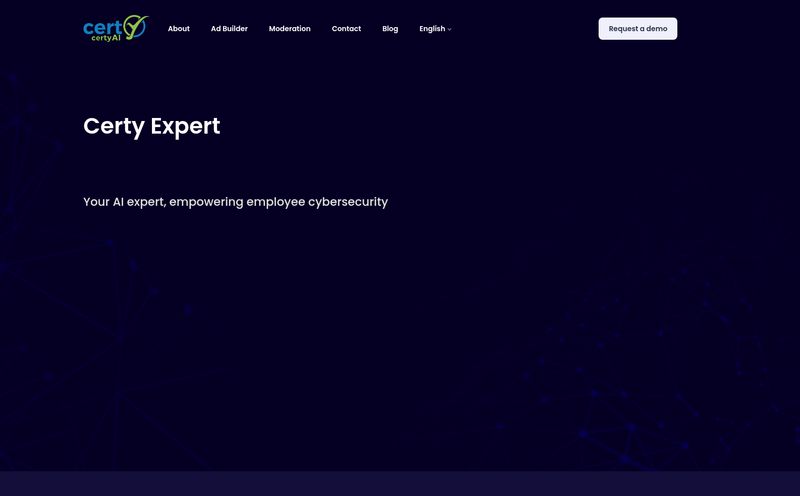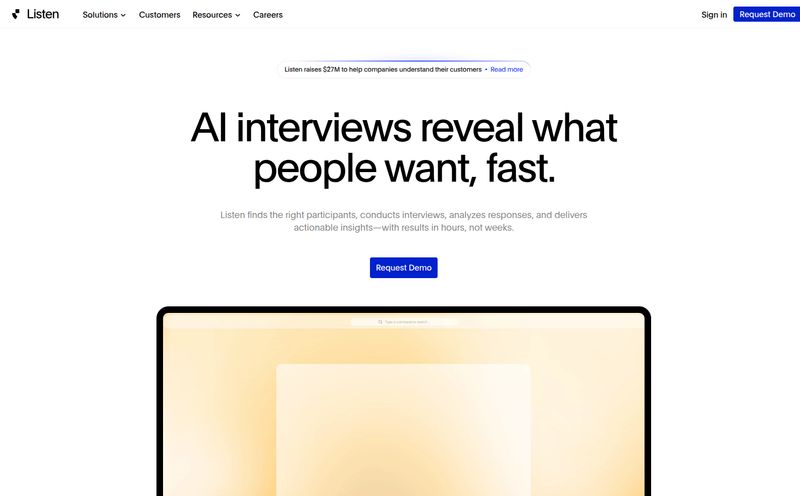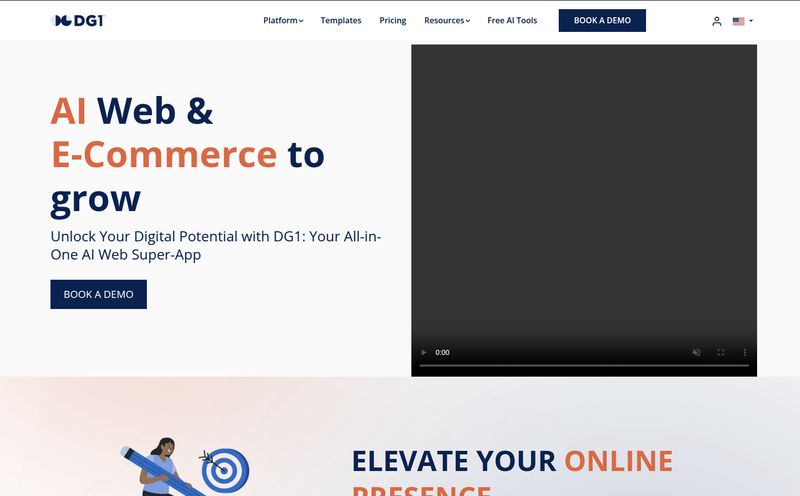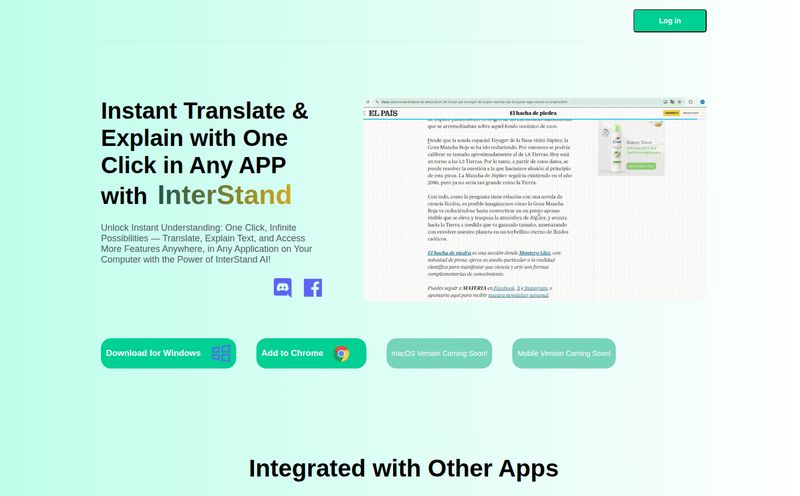I’ve been in the SEO and traffic generation trenches for what feels like a lifetime. I've seen trends come and go, from keyword stuffing (yikes) to the rise of video. And for years, the big, scary monster in the room for video creators has always been the language barrier. It's like building this incredible, beautiful ship, only to find out it can only sail in your local pond. You know there’s a whole ocean of viewers out there—in Spain, Germany, India, Brazil—but reaching them? That’s always been a messy, expensive affair involving freelancers, agencies, and a lot of back-and-forth.
So, whenever a new tool pops up promising to slay that monster with AI, my professional curiosity gets the better of me. This time, it's a Chrome extension called Voiceling. It claims to offer one-click AI dubbing for YouTube videos. One click? That's a bold claim. Naturally, I had to see if it was just another clunky robot voice generator or something... more.
So, What Exactly is Voiceling?
In simple terms, Voiceling is a clever little extension for your Chrome browser that bolts onto YouTube. You find a video (yours or someone else's), you click a button, and—poof—it translates the audio and dubs it into another language. The whole idea is to make video content borderless.
Think of it less like a traditional, complicated software and more like a tiny, multilingual voice actor who lives in your browser, ready to perform on demand. For creators, the pitch is obvious: expand your reach and tap into new markets without breaking the bank. For viewers, it means you can finally understand that amazing Japanese woodworking tutorial or that French cooking channel everyone’s talking about. It’s a pretty compelling concept, I have to admit.
Getting My Hands Dirty: The First Run
Installation was, thankfully, as easy as they say. A quick trip to the Chrome Web Store, one click, and it was nestled into my browser bar. No weird permissions, no asking for my life story. A good start.
To kick the tires, I pulled up one of my own older videos—a simple, 7-minute talking-head piece about Google Analytics 4. I chose Spanish as my target language. I clicked the Voiceling button, held my breath, and waited. I was half-expecting a monotone, robotic voice to butcher my GA4 tutorial. What came back a few moments later was… well, it was surprisingly human.
The AI correctly identified my voice as male and used a corresponding Spanish male voice. The pacing was decent, and it wasn't just a flat reading of a script. There was a semblance of intonation. It wasn't perfect, but it was leagues beyond the auto-translate captions we've all laughed at. It was usable. Genuinely usable.

Visit Voiceling
The Features That Actually Matter
A long feature list is great for marketing, but as a user, I only care about what works and what makes my life easier. Here’s the stuff that stood out to me.
It Sounds More Human Than Robot
This is the big one. Voiceling’s secret sauce is in its AI voice quality. The combination of gender recognition and multi-speaker detection is what makes the difference. If you have a video with a male and a female speaker, it will use two distinct, gender-appropriate voices for the dub. This is a massive leap from older tools that would use a single, monotonous voice for everyone, which just sounds bizarre. The voices aren't going to win an Oscar for voice acting, but they have a natural cadence that makes them easy to listen to.
It Keeps the Vibe Alive
Have you ever watched a dubbed movie where all the background sound is stripped out? It feels sterile and weird. One of my favorite, and honestly most underrated, featuers of Voiceling is its ability to conserve background noise. If you’re vlogging from a bustling city street or there's music playing softly in your original video, the dubbed version keeps that ambient audio. It’s a subtle touch, but it makes the final product feel so much more authentic and professionally mixed. It’s the difference between a real dub and a cheap voiceover.
Unlocking Global Markets with 30+ Languages
The support for over 30 languages is a huge plus. We're not just talking about Spanish, French, and German. You have access to a wide array of languages, which opens up massive potential traffic sources. From an SEO perspective, this is gold. You can start creating content specifically for underserved language markets, effectively giving your videos a whole new life and a new audience to rank for. It's a growth hacking strategy built right into a simple tool.
The Good, The Bad, and The AI-Ugly
No tool is perfect. After playing around with Voiceling for a while, I've got a pretty clear picture of where it shines and where it still has some growing to do.
The ease of use is its biggest win. The promise of "one-click dubbing" is pretty close to reality. For busy creators who don't have time to mess with complex video editing software, this is a game-changer. The speed is also impressive; you're not waiting hours for a translation. And the free plan is actually useful for testing the waters before you commit any cash.
However, it's not all sunshine and roses. The biggest drawback for me is that it's currently limited to Chromium-based browsers (like Chrome and Edge). My friends who are die-hard Firefox or Safari users are out of luck for now. Also, you need to be mindful of the video length limitations on the plans. If you're producing hour-long podcasts for YouTube, you'll need to keep an eye on your minutes. Lastly, the company is upfront that accuracy can dip a bit with highly technical or jargon-heavy content. If you're explaining rocket science, the AI might get a term or two wrong. For my marketing content, it was fine, but it’s something to be aware of.
Let's Talk Money: The Pricing Breakdown
Cost is always a huge factor, so let's break down their pricing structure. I've found it to be pretty straightforward, which I appreciate.
| Plan | Price | Key Features |
|---|---|---|
| FREE | $0.00 | 5 minutes of total translation (5 min max per video). A great way to test the core features. |
| EARLY PLAN STARTER | $15.99 / month | 60 minutes of translation per month (20 min max per video). Ideal for regular creators. |
| PRO (Available Soon) | $29.99 / month | 60 minutes/month with unlimited video duration, plus voice cloning and web interface access. |
Honestly, compared to the cost of hiring a human translator and voice artist—which can easily run you hundreds of dollars for a single 10-minute video—this pricing is incredibly competitive. The $15.99 plan is a fantastic sweet spot for most YouTubers. It gives you enough runway to dub several videos a month and seriously test the waters in a new language market.
My Final Verdict: Is Voiceling the Future?
So, is Voiceling the magic bullet that will make every video on Earth instantly multilingual? Not quite yet. But it's damn close, and it's one of the most promising and accessible tools I've seen in this space.
It represents a shift from AI being a novelty to being a practical tool for growth. It’s not about replacing talented human translators for high-end cinematic projects. It’s about empowering the 99% of creators—the solo entrepreneurs, the educators, the vloggers, the small businesses—who would otherwise never have the budget to even consider dubbing. It democratizes access to a global audience.
While there are limitations, the core product is strong, the pricing is fair, and the potential for audience growth is undeniable. If you’re a video creator looking to break out of your language bubble, giving Voiceling's free plan a spin is, in my opinion, a no-brainer.
Frequently Asked Questions
How good is the AI gender and multi-speaker detection?
From my tests, it's surprisingly accurate. In videos with clear male and female speakers, it correctly assigned different voices. It's not foolproof, but it works well enough to make conversations and interviews sound natural rather than having one voice narrate everything.
Is using AI dubbing better than just using YouTube's auto-translated captions?
Oh, absolutely. It's a completely different experience. Captions require the viewer to read, splitting their attention from the visuals. A good dub allows the viewer to watch and absorb the content naturally, just as they would with a video in their native language. It leads to higher engagement and watch time.
Will using an AI voice hurt my channel's authenticity?
This is a valid concern. I think it comes down to transparency. The voices are good, but they aren't perfect replicas of human speech. Most viewers will understand it's an AI dub. The key is that you're making an effort to provide content in their language. In my experience, the accessibility you offer far outweighs any perceived lack of authenticity from the AI voice.
Can I use this on any YouTube video, or just my own?
The beauty of it being a Chrome extension is that you can use it to watch and understand almost any video on YouTube. So it's both a tool for creators to dub their own work and for viewers to consume content from around the world.
What happens if I need more than 60 minutes in a month?
The upcoming Pro plan mentions the ability to add extra minutes for $0.50 per minute. This provides a flexible way to handle months where you might have a larger project or more content to produce without having to upgrade to a much higher-tier plan.
References and Sources
- Voiceling Official Website (Note: This is a placeholder link)
- Harvard Business Review: Speak to Global Customers in Their Own Language
- GALA: The Power of Dubbing



